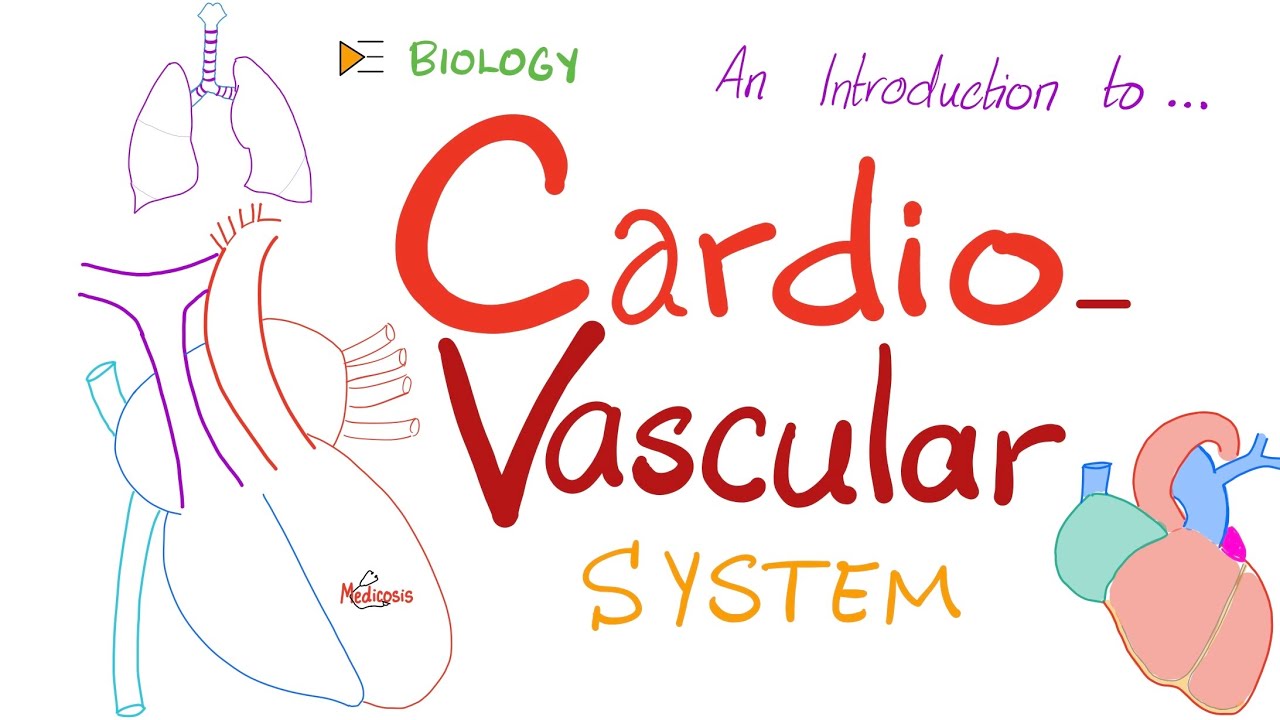Sistem Peredaran Darah Janin Sebelum dan Setelah Lahir
Summary
TLDRThis educational video script explains the fetal and postnatal blood circulation systems. In the womb, the fetus receives oxygenated blood from the placenta through the umbilical vein, with blood bypassing the underdeveloped lungs via the ductus arteriosus. After birth, the umbilical cord is clamped, the lungs expand, and the heart adjusts to the baby's new circulation, closing the ductus arteriosus and foramen ovale, completing the transition to postnatal circulation.
Takeaways
- 👋 The video starts with an introduction from Lulus Septiarini Aryanda Putri, who welcomes the viewers to her YouTube channel.
- 🩺 The main topic discussed is the blood circulation system in fetuses and how it changes after birth.
- 🩸 Fetal blood circulation begins with oxygen and nutrient-rich blood flowing from the placenta to the fetus via the umbilical vein.
- 🌬 The umbilical vein transports about 500 ml of blood per minute, passing through the ductus venosus to the inferior vena cava.
- ❤️ Blood from the inferior vena cava enters the right atrium, with most of it flowing to the left atrium through the foramen ovale.
- 💨 In the fetal stage, blood does not go to the lungs for gas exchange, as the lungs are still developing. Instead, it passes through the ductus arteriosus into the aorta.
- 🫀 After birth, the baby's lungs expand with the first breath, starting the process of gas exchange in the lungs.
- 🚼 The closure of the ductus arteriosus and the foramen ovale marks the transition from fetal to newborn circulation.
- ⚖ The shift in pressure between the left and right atrium after birth stimulates the closure of the foramen ovale.
- 🙏 The video concludes by thanking viewers and reminding them to subscribe, like, comment, and share.
Q & A
What is the primary role of the umbilical vein in fetal circulation?
-The umbilical vein carries oxygen-rich and nutrient-rich blood from the placenta to the fetus. Approximately 500 ml of blood per minute flows through the umbilical vein, supplying the fetus with essential nutrients and oxygen.
How does fetal blood bypass the liver during circulation?
-In fetal circulation, blood bypasses the liver through the ductus venosus, allowing the oxygenated blood from the umbilical vein to flow directly to the inferior vena cava and then to the heart.
What is the role of the foramen ovale in fetal circulation?
-The foramen ovale allows most of the oxygen-rich blood from the right atrium to pass directly into the left atrium, bypassing the fetal lungs, which are not yet functional.
Why does only a small amount of blood flow to the fetal lungs?
-Since the fetal lungs are not fully developed and do not participate in gas exchange, only a small amount of blood flows to the lungs to support their growth. Most of the blood bypasses the lungs through the ductus arteriosus.
What is the function of the ductus arteriosus in fetal circulation?
-The ductus arteriosus diverts blood from the pulmonary artery to the aorta, bypassing the non-functional fetal lungs, which are not yet involved in gas exchange.
How does fetal blood return to the placenta for gas exchange?
-Blood high in carbon dioxide returns to the placenta for gas exchange through the iliac arteries and the umbilical arteries.
What happens to the umbilical cord after birth?
-After birth, the umbilical cord is clamped, stopping the flow of oxygen and nutrients from the mother to the baby. The baby must then rely on its own lungs and digestive system for oxygen and nutrients.
How do the lungs adapt after birth in a newborn?
-With the newborn's first breath, the lungs expand, and the alveoli in the lungs clear out fluid. The increased blood pressure in the baby's body and decreased lung pressure facilitate the transition to normal lung function for oxygen exchange.
What triggers the closure of the foramen ovale after birth?
-After birth, the increase in blood pressure in the left atrium and the decrease in pressure in the right atrium cause the foramen ovale to close, completing the transition from fetal to neonatal circulation.
What is the significance of the closure of the ductus arteriosus after birth?
-The closure of the ductus arteriosus ensures that blood no longer bypasses the lungs and is instead directed to the lungs for oxygen exchange, allowing the newborn to breathe independently.
Outlines

هذا القسم متوفر فقط للمشتركين. يرجى الترقية للوصول إلى هذه الميزة.
قم بالترقية الآنMindmap

هذا القسم متوفر فقط للمشتركين. يرجى الترقية للوصول إلى هذه الميزة.
قم بالترقية الآنKeywords

هذا القسم متوفر فقط للمشتركين. يرجى الترقية للوصول إلى هذه الميزة.
قم بالترقية الآنHighlights

هذا القسم متوفر فقط للمشتركين. يرجى الترقية للوصول إلى هذه الميزة.
قم بالترقية الآنTranscripts

هذا القسم متوفر فقط للمشتركين. يرجى الترقية للوصول إلى هذه الميزة.
قم بالترقية الآنتصفح المزيد من مقاطع الفيديو ذات الصلة
5.0 / 5 (0 votes)






